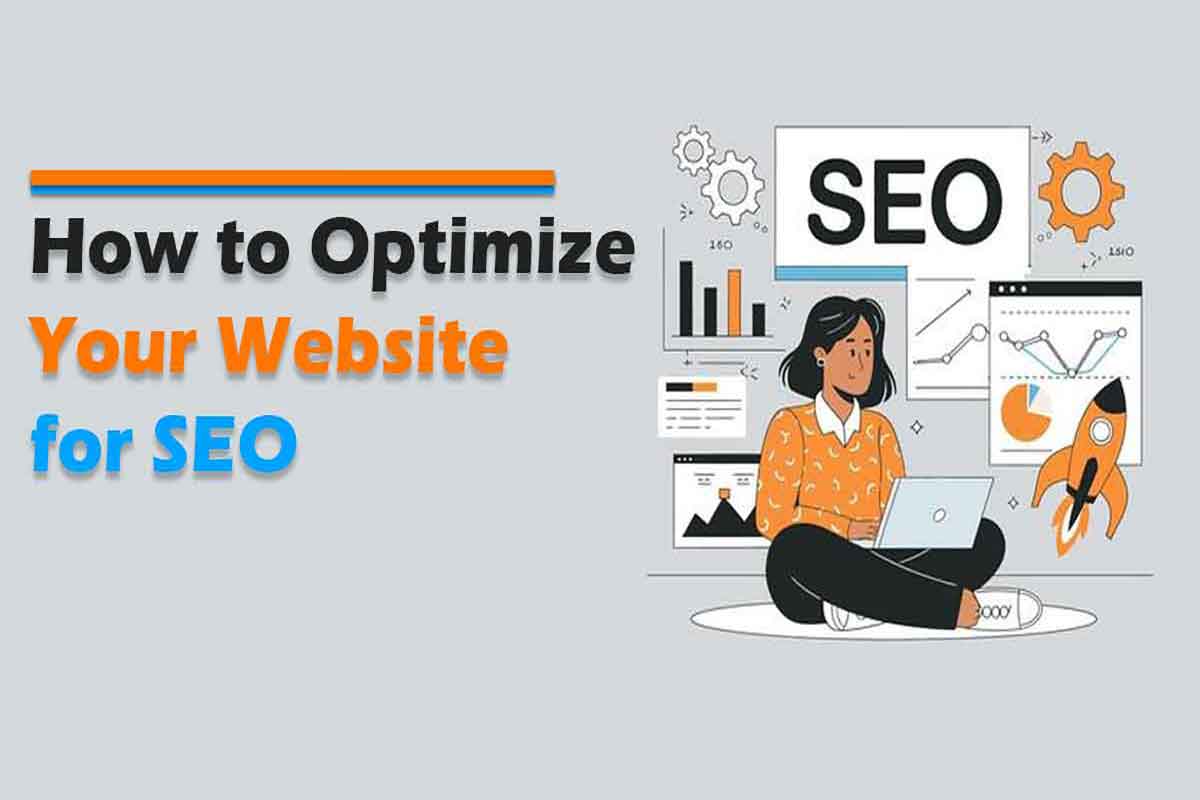Search Engine Optimization (SEO) is the backbone of any successful online presence. With millions of websites competing for attention, optimizing your website for SEO is no longer optional—it’s essential. Whether you’re a business owner, blogger, or marketer, understanding how to improve your website SEO can drive organic traffic, boost rankings, and increase conversions.
In this guide, we’ll walk you through actionable steps to optimize your website for SEO, ensuring it ranks higher on search engines like Google. From technical tweaks to content strategies, we’ve got you covered.

Why Optimizing Your Website for SEO Matters
Before diving into the “how,” let’s address the “why.” Optimizing your website for SEO offers numerous benefits:
- Increased Organic Traffic: Higher rankings lead to more visibility and clicks.
- Better User Experience: SEO improvements often enhance site speed, navigation, and readability.
- Higher Credibility: Websites that rank well are perceived as more trustworthy.
- Cost-Effective Marketing: Unlike paid ads, organic traffic is free and sustainable.
According to a study by BrightEdge, organic search drives 53% of all website traffic. This statistic alone highlights the importance of optimize your website for SEO.
Step-by-Step Guide to Optimize Your Website for SEO
1. Conduct Keyword Research
Keyword research is the foundation of any SEO strategy. It helps you understand what your target audience is searching for and how to align your content with their needs.
- Tools to Use: Google Keyword Planner, Ahrefs, SEMrush, or Ubersuggest.
- Focus on:
- Primary keywords (e.g., “optimize your website for SEO”).
- Long-tail keywords (e.g., “how to improve website SEO for beginners”).
- Related terms and synonyms.
Pro Tip: Use keywords naturally in your content to avoid keyword stuffing.

2. Optimize On-Page Elements
On-page SEO involves optimizing individual pages to rank higher and attract relevant traffic.
a) Title Tags
- Include your primary keyword (e.g., “How to Optimize Your Website for SEO”).
- Keep it under 60 characters to avoid truncation in search results.
b) Meta Descriptions
- Write compelling meta descriptions with secondary keywords (e.g., “Learn how to improve your website SEO with these proven strategies”).
- Aim for 150-160 characters.
c) Headers (H1, H2, H3)
- Use headers to structure your content.
- Incorporate keywords naturally (e.g., “Why Website SEO Matters” as an H2).
d) URL Structure
- Keep URLs short, descriptive, and keyword-rich.
- Example:
www.yoursite.com/optimize-website-seo.
3. Improve Website Speed
Site speed is a critical ranking factor. A slow website can lead to higher bounce rates and lower rankings.
- Tools to Test Speed: Google PageSpeed Insights, GTmetrix.
- Tips to Improve Speed:
- Compress images using tools like TinyPNG.
- Enable browser caching.
- Minimize CSS, JavaScript, and HTML files.
4. Create High-Quality Content
Content is king in SEO. Focus on creating valuable, engaging, and shareable content that addresses your audience’s pain points.
- Types of Content: Blog posts, guides, videos, infographics.
- Best Practices:
- Use keywords naturally.
- Include internal links to other relevant pages.
- Add external links to authoritative sources (e.g., Google’s SEO Starter Guide).
5. Optimize for Mobile
With over 58% of global web traffic coming from mobile devices, having a mobile-friendly website is non-negotiable.
- Use responsive design to ensure your site looks great on all devices.
- Test your site’s mobile usability using Google’s Mobile-Friendly Test.
6. Build Quality Backlinks
Backlinks are a major ranking factor. They signal to search engines that your content is trustworthy and authoritative.
- Strategies to Build Backlinks:
- Guest blogging on reputable sites.
- Creating shareable content like infographics or research studies.
- Reaching out to influencers in your niche.
7. Leverage Technical SEO
Technical SEO ensures your website is crawlable and indexable by search engines.
- Key Areas to Focus On:
- XML sitemap: Submit it to Google Search Console.
- Robots.txt: Ensure it’s configured correctly.
- Fix broken links using tools like Screaming Frog.
8. Monitor and Analyze Performance
SEO is an ongoing process. Regularly monitor your website’s performance to identify areas for improvement.
- Tools to Use: Google Analytics, Google Search Console, Ahrefs.
- Metrics to Track: Organic traffic, bounce rate, keyword rankings.
Frequently Asked Questions (FAQs)
Q1: How long does it take to see results from SEO?
A: SEO is a long-term strategy. While some improvements can be seen in a few weeks, significant results typically take 3-6 months.
Q2: Can I do SEO on my own, or should I hire an expert?
A: Basic SEO can be done independently, but for complex tasks like technical SEO or link-building, hiring an expert may be beneficial.
Q3: What’s the difference between on-page and off-page SEO?
A: On-page SEO focuses on optimizing elements within your website (e.g., content, meta tags), while off-page SEO involves external factors like backlinks and social signals.
Conclusion
Optimizing your website for SEO is a multifaceted process that requires time, effort, and consistency. By following the steps outlined in this guide—conducting keyword research, optimizing on-page elements, improving site speed, and building quality backlinks—you can significantly enhance optimize your website for SEO and drive more organic traffic.
Remember, SEO is not a one-time task but an ongoing effort. Regularly monitor your performance, adapt to algorithm changes, and stay updated with the latest trends.
Ready to take your website to the next level? Start implementing these strategies today and watch your rankings soar!
Suggested Related Topics:
- “Top 7 Website Themes for Small Businesses in 2025“
- “Top Tools for Website SEO Optimization”
- “Common SEO Mistakes to Avoid in 2025”
By following this guide, you’ll be well on your way to mastering how to optimize your website for SEO. Happy optimizing!




